Tomato Aspic - A Quivering, Chilled, Jellied Tomato Salad
On the culinary calendar, food lovers celebrate the arrival of the firsts - the first asparagus, the first strawberry, the first corn, acorn squash, and so on. For me, a highlight of the firsts is the arrival of the first vine-ripened tomato, which usually coincides with summer’s heat reaching its apex.
For Thomas Jefferson and his neighbors in Virginia, it was the first English Peas.
Peas Come to Table
Among the vegetables in Thomas Jefferson’s garden was the English pea, considered to be his favorite. He grew fifteen types of the English pea, and his frequent jottings on the vegetable in his Garden Book suggest that he paid particular attention to it, happily noting when “peas come to table.” By staggering the planting of peas, Jefferson was able to eat them fresh from the garden from the middle of May to the middle of July.
A Neighborhood Contest
Aside from personal preference, Jefferson might have taken special note of the English pea because of an annual neighborhood contest to see which farmer could bring to table the first peas of spring. The winner would host the other contestants in a dinner that included the peas.
Though Jefferson’s mountaintop garden, with its southern exposure to warmth and light, should have provided an advantage, it seems that the contest was almost always won by a neighbor named George Divers.
As Jefferson’s grandson recalled: “A wealthy neighbor [Divers], without children, and fond of horticulture, generally triumphed. Mr. Jefferson, on one occasion, had them first, and when his family reminded him that it was his right to invite the company, he replied, ‘No, say nothing about it, it will be more agreeable to our friend to think that he never fails.’”
www.monticello.org
Most of us say tomatoes in the US of A, the Brits love their tomahtos, and down-home country folk here love their maters (máy-ters.) This succulent orb of complex sweet, savory, earthy, assertive, and juicy meat resides on a high pedestal in the world of adored foods.
Pomme d’amour, as the French like to call the tomato because of its perceived aphrodisiac power, was introduced to Europe from the Americas by the Spanish Conquistadors. It certainly lived up to the French moniker by seducing the rest of the world with its varied combinations of sweet and sour flavors. The color doesn’t hurt either. Most associate tomatoes with the color red, but this fruit (it is botanically classified as a fruit) comes in colors ranging from deep purple to red and on to bright orange or yellow.
When the first tomato arrives it’s best not to wait around. Just slice it, give it a sprinkle of good sea salt and enjoy. After that, dress it up any way you like, but don’t forget - it deserves to be the star ingredient.
While tomato growers provide us with fresh tomatoes year round, those out-of-season imitators fail to deliver the punch of a fully vine-ripened fruit in its season. Fortunately, fresh tomatoes can be canned, juiced, reduced to a thick paste, and sun-dried to be enjoyed later.
One of my treasured memories from Baltimore was enjoying meals at The Women’s Industrial Exchange tea room on Charles Street. One of their time-honored items was a tomato aspic served with a homemade mayonnaise. It was summer on a saucer.
Tomato Aspic
This recipe as published in SAVEUR is built on tomato juice simmered with some aromatic vegetables and spices then poured into a mold and chilled. It’s an easy dish to prepare and even easier to enjoy.
If you live in or near Salem, you can buy homemade tomato juice from the Raymond Kuenzi Farm booth at the Saturday Farmers Market. It comes frozen so you can keep for a few months or use immediately.
Serves 8
Ingredients:
- 4 cups tomato juice
- 1 small yellow onion
- 2 stalks celery, chopped
- 6 sprigs parsley
- Juice of ½ lemon
- 1 tablespoon sugar
- 1 bay leaf
- 3 whole cloves
- Pinch of salt
- 4 black peppercorns
- 2 tablespoons gelatin
Method:
- Mix together the first 10 ingredients in a heavy saucepan and bring to a boil.
- Reduce heat to low and simmer 30-40 minutes.
- Soften the gelatin in ½ cup of water.
- Strain the juice and discard the solids.
- Return to the pan and stir in the gelatin until dissolved.
- Pour into a lightly oiled 8×8 inch pan or a ring mold.
- Cover with plastic wrap and chill until firm, at least 4 hours.
- Serve with basil mayonnaise - see recipe below.
Note: Sometimes the mixture wants to separate a bit. To avoid that, I get my trusty frozen pint bottle of water out of the freezer and stir my liquid aspic until it cools a bit and the gelatin begins to help it stabilize.
Here’s a great recipe for basil mayonnaise from Ina Garten that is wonderful with this dish. She created it for a fresh heirloom tomato sandwich…yum!
Whisk together a cup of good mayonnaise with about a dozen chopped basil leaves, 1 teaspoon Kosher salt, ¼ teaspoon fresh ground pepper, a teaspoon of freshly squeezed lemon juice, a tablespoon of good olive oil, and 1 teaspoon of minced garlic.
Bon appétit,
— Charles
Category: Salad, Uncategorized
About the Author (Author Profile)
Music, food and photography are at the center of Charles’ life. He performed with the Dallas Symphony, Dallas Opera and was assistant principal bassoonist with the Fort Worth Symphony for more than 20 years. When Charles and Victor moved to Baltimore, Charles created Lone Star Personal Chef and Catering Service and taught cooking classes at Williams-Sonoma. Now in Salem, Charles is a Realtor with Coldwell Banker Mountain West Real Estate, taught cooking classes for children at the A.C. Gilbert Discovery Village, and owns and operates Charles Price Photography. Charles and Vic enjoy entertaining and frequently host dinners as fundraisers for local non-profits and charities






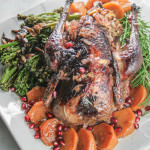

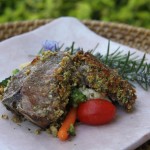



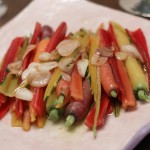
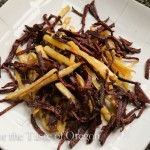


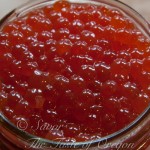

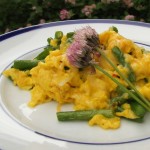
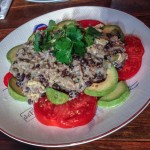

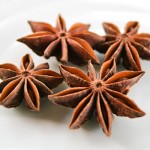



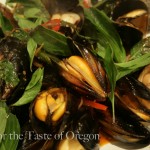


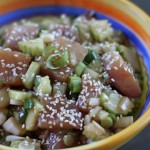
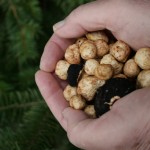




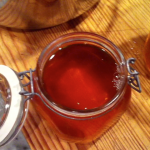











Comments (0)
Trackback URL | Comments RSS Feed
There are no comments yet. Why not be the first to speak your mind.